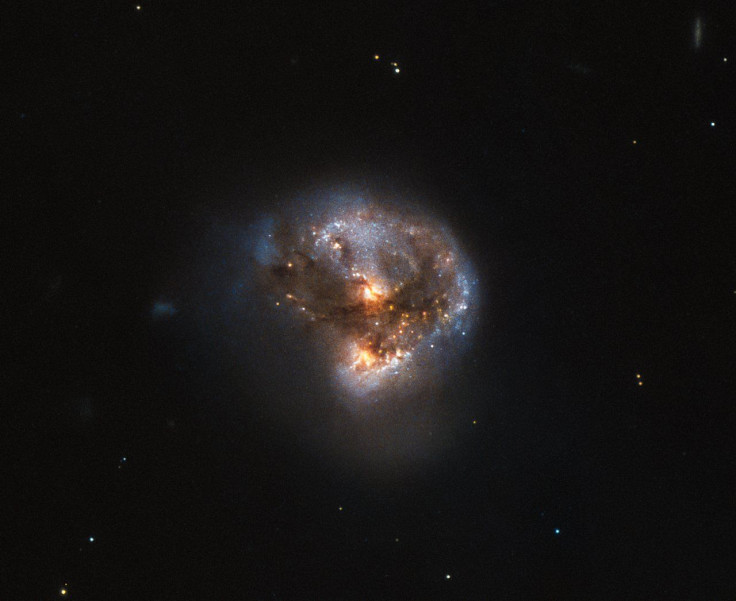Hubble Space Telescope Spots A ‘Megamaser’ In A Galaxy 370 Million Light-Years From Earth

Scientists using the Hubble Space Telescope have captured an image of a galaxy they believe contains a “megamaser” beaming out intense bursts of microwave radiation. This galaxy, captured using Hubble’s Advanced Camera for Surveys (ACS), and the Near Infrared Camera and Multi-Object Spectrometer (NICMOS), is located roughly 370 million light-years from Earth.
Maser — an acronym for microwave amplification by stimulated emission of radiation — emissions are associated with early and late stages of a star’s life. The most intense sources of maser emissions in our galaxy, for instance, have been observed coming from regions of active star formation, and from the ionized spheres around young and hot stars.
Megamasers, as the name suggests, have a much higher luminosity, and can be over 100 million times brighter than the masers found in galaxies like the Milky Way.
“A megamaser is a process where some components within a galaxy (like gas clouds) are in the right stimulated physical condition to radiate intense energy (in this case, microwaves),” the European Space Agency (ESA) explained in a statement accompanying the image.
A unique thing about this galaxy, named IRAS 16399-0937, is that it contains two separate nuclei that are in the process of merging. One of the cores, IRAS 16399N, is also believed to contain a supermassive black hole approximately 100 million times the mass of the sun.
“The nuclei are very different,” the ESA said. “IRAS 16399S appears to be a starburst region, where new stars are forming at an incredible rate. IRAS 16399N, however, is something known as a LINER nucleus (Low Ionization Nuclear Emission Region), which is a region whose emission mostly stems from weakly-ionized or neutral atoms of particular gases.”
Scientists believe that the galaxy’s peculiar rosebud-like structure is the result of the two nuclei being buried deep within the same swirl of cosmic gas and dust.
The Hubble Space Telescope was launched aboard NASA’s space shuttle Discovery on April 24, 1990. Since then, it has not only captured photos of an unimaginable number of truly spectacular nebulae and galaxies, it has also peered back over 13 billion years to look at our cosmos in its infancy, giving us, as NASA aptly put in an earlier statement, “a front row seat to the awe inspiring universe we live in.
© Copyright IBTimes 2024. All rights reserved.





















